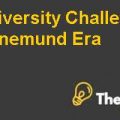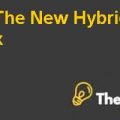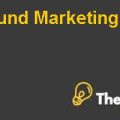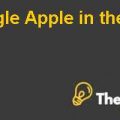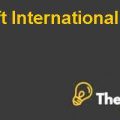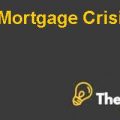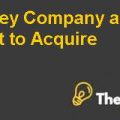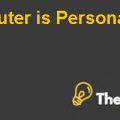Sony Corporation Case Solution
Impact of each ratio on the organization:
The current ratio of the organization is less than 1 i.e. around 0.86 which means that the organization would be unable to pay off its debt obligations. The debt to total assets i.e. 2.71 percent shows that the organization has a considerable asset that is funded by debt. This might result in the defaulting of the loan in case of a sudden rise in interest rates. The 12.81 percent of debt to equity ratio means that $12.81 is used by the organization in debt for every $1 of its equity. An increase in debt to equity might lead to financial leverage. The total asset turnover of the organization is around 0.43 indicating that assets are not being used efficiently to generate sales. This will negatively influence the sales growth of the organization.
Similarly, the net profit margin of the organization is around 11.15 percent which means that the company is experiencing a profitable growth. A 0.25 percent ratio of return on total assets indicates that Sony is not capable of earning more despite high investment. The Earning per share ratio is 723.41 which means that the investors are provided with high dividend and is experiencing profitable growth.
Change in ratios over the past 3 years:
The current ratio, debt to total assets, debt to equity, total asset turnover, and return on total assets are on a declining trend. This is because of the inefficient utilization of the assets, inability to payoff the debt obligations, and low return on total assets. Whereas earnings per share are increasing over time and there has been a significant improvement in the net profit margin over the past three years as shown in Appendix E.
Ratios comparison with LG and Samsung:
The current ratio of Samsung is highest among all three organizations i.e. 3.01 which represents the ability of the organization to pay its debt obligation. The debt to total asset and debt to equity ratio of Samsung and Sony is too low which indicates the perception of loss credit rating in the market whereas the debt to total asset and debt to equity ratio is too high representing high financial risk. The total asset turnover ratio of LG is high representing its ability to efficiently use assets in comparison to Samsung and Sony. But, LG has the lowest net profit margin which might be because of declined sales or high investment in technology and business operations. The return on total asset-sand Earning per share of Samsung is the highest showing more earning on less investment and increased interest of shareholders in terms of receiving an increased dividend.
Stock Price Analysis of the past three years
Over the past three years, the highest stock price of Sony was observed in the year 2019 i.e. 68 whereas the lowest stock price was 30 in 2017. The highest stock price of Samsung was observed in the year 2018 i.e. 1585046 whereas the lowest stock price was 8125 in 2017.The highest stock price of Samsung was observed in the year 2018 i.e. 108160 whereas the lowest stock price was 54502 in 2017. Comparatively, the current stock price of Sony, Samsung, and LG is 72.67, 59500, and 89900 respectively.
Multiple calculations:
The P/E ratio of LG is higher as compared to Samsung and Sony i.e. 414.99 which means the stock price is high relative to earnings and possibly overvalued. Whereas, the stock price of Samsung i.e. 17.63 and Sony i.e. 0.9 means that the stock price is low relative to earnings and possibly undervalued.
Problem:
Despite the high profitable growth of the organization, there had been a significant decline in the market share of the organization. This is mainly due to the premium pricing of the brand which has been distorting the brand image in the consumer electronics. Due to this reason, Sony has an increased threat of competition because of its low marketing and promotional efforts.
Approaches to solving the problem:
Based on the analysis of the organization, the possible approaches that can be considered to solve the organizational issues like high product pricing, low demand, an increased threat of competition include cost reduction, investment in technology, and leverage financial resources. Cost reduction is one of the highly effective methods to bring a reduction in operational cost and experience profitability. This can be significantly done by considering cost reduction tools like cost-benefit analysis, standard costing, and budgetary control. Similarly, investment in technology is known to boost organizational growth followed by reducing cost and improving the profitability of the organization. An increased focus on the use of artificial intelligence, robotics, and virtual reality would provide the organization with a competitive edge in the market. Acquiring start-ups would allow the organization to access a new market, share skills, and bring innovative and advanced technological products into the market.
Possible solutions:
The possible solutions to solve the issue of the organization include investment in technological approaches and the acquisition of start-ups. Both approaches are expected to provide the organization with a competitive edge in the market. Because the company would have the ability to satisfy the needs of the customers by offering low prices but high-quality products. This would lead to increased sales and improve product demand in the market. It would make the business process more efficient through a reduction in the time required to perform particular business actions.
Evaluation:
Pros:
- Acquiring start-ups by leveraging the financial resources efficiently would allow the organization to access a new market, share skills, and bring innovative and advanced technological products into the market.
- It would increase the probability of more revenue generation and positive net income to experience long-term profitable growth.
- The offering of innovative products at competitive pricing would increase product demand and lead to consumer loyalty.
- The advanced technological product offering would allow it to remain competitive and retain its potential customer base.
Cons:
- By acquiring a start-up, there is a high probability of failure because the organization might not have all the resources that the organization is looking for.
- It would high investment and increased time to conduct market research in finding the most appropriate start-up to acquire.
Implementation and evaluation:
The implementation plan for acquiring a start-up to improve an organizational process, product offering, cost reduction, and obtaining a competitive edge in the market includes the following:
-
- There is a requirement to hire a team of professionals with the capability to analyze the market.
- Based on the analysis of the market trends, find the most appropriate start-up to be acquired based on the needs of the organization.
- Set the benchmark and compare the results of the financial and operational performance of the organization to evaluate the successful implementation of the strategic approach.
- Finally, the monitoring of the Key performance indicators to continue with the change which includes increased sales, profitable growth, improved brand awareness, consumer loyalty, high demand, and cost reduction..........................
- Sony Corporation Case Solution
- This is just a sample partial case solution. Please place the order on the website to order your own originally done case solution.


